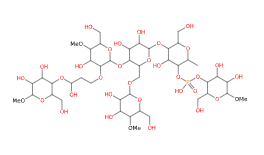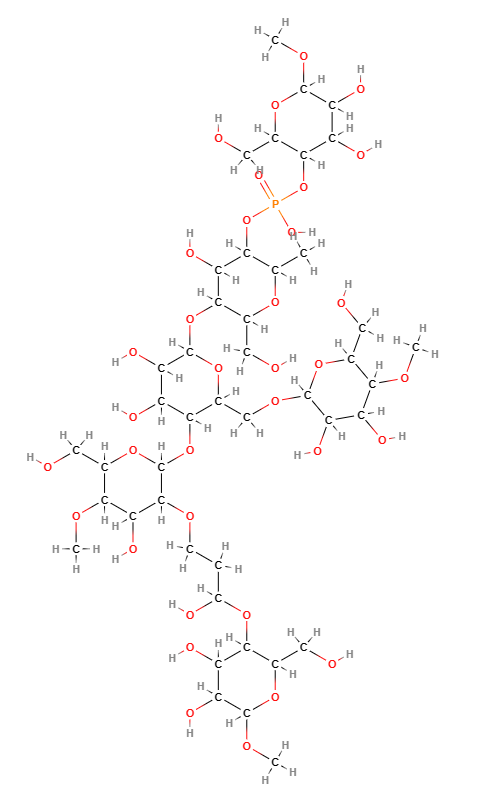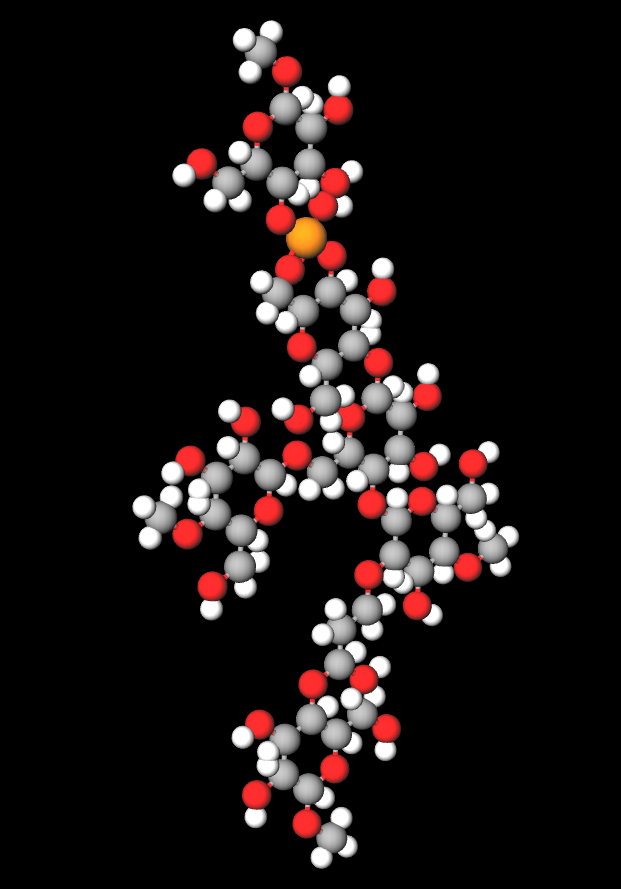| "Descrizione" by Frank123 (12416 pt) | 2023-Jul-28 16:32 |
Review Consensus: 9 Rating: 9 Number of users: 1
| Evaluation | N. Experts | Evaluation | N. Experts |
|---|---|---|---|
| 1 | 6 | ||
| 2 | 7 | ||
| 3 | 8 | ||
| 4 | 9 | ||
| 5 | 10 |
E1442 (Fosfato di diamido idrossipropilato) è un amido modificato ottenuto mediante esterificazione di un amido alimentare (riso, mais) ossicloruro di fosforo o trimetafosfato di sodio e ossido di propilene.
Scomposizione del nome e funzione dei componenti
- Hydroxy Propyl (Idrossipropilato) - Indica che le molecole di amido sono state modificate con gruppi idrossipropilici.
- Distarch (Diamido) - Si riferisce a un amido modificato.
- Phosphate (Fosfato) - Indica la presenza di gruppi fosfato come parte della modifica.
Descrizione e funzione delle materie prime utilizzate nella produzione
- Amido - Un polisaccaride estratto principalmente da cereali e tuberi.
- Ossido di propilene - Utilizzato per introdurre gruppi idrossipropil nell'amido.
- Fosfato - Utilizzato per introdurre gruppi fosfato nell'amido.
Riassunto del suo processo di sintesi industriale passo per passo
- Estrazione dell'amido - L'amido viene estratto da piante come il mais, le patate o il grano.
- Idrossipropilazione - L'amido estratto viene trattato con ossido di propilene per introdurre gruppi idrossipropil.
- Fosfatazione - L'amido idrossipropilato viene successivamente trattato con un agente fosfatante per introdurre i gruppi fosfato.
- Purificazione - L'amido modificato viene purificato per rimuovere eventuali reagenti non reagiti o impurità.
- Essiccazione - Il prodotto viene essiccato per rimuovere l'umidità residua.
Si presenta in forma di polvere bianca o granuli bianchi.

A cosa serve e dove si usa
Alimentazione
Ingrediente inserito nella lista degli additivi alimentari europei come E1442 con funzione addensante e stabilizzante. E' utilizzato nei ketchup in quanto ha mostrato valori più bassi del parametro K.
Applicazioni
- Additivo Alimentare - Agisce come addensante, stabilizzante e emulsionante in vari prodotti alimentari.
- Miglioramento della Texture - Utilizzato in alimenti come salse, zuppe e gelati per migliorare la consistenza e la stabilità.
- Resistenza alle Condizioni Estreme - Offre una maggiore stabilità alle preparazioni alimentari che subiscono processi come la pastorizzazione, la sterilizzazione o la congelazione.
- Prodotti da Forno - Può essere utilizzato in prodotti da forno per migliorare la morbidezza e la durata di conservazione.
Medicina
Qualche studio si è interessato agli effetti del Fosfato di diamido idrossipropilato sul metabolismo energetico postprandiale e le conclusioni ritengono che questo amido modificato possa avere implicazioni benefiche nella gestione del peso (1).
Sicurezza
Il Gruppo di esperti scientifici dell'EFSA sugli additivi alimentari e le fonti di nutrienti aggiunti agli alimenti ritiene che non vi sia alcun problema di sicurezza per l'uso di amidi modificati come additivi alimentari agli usi e ai livelli d'uso dichiarati per la popolazione generale e che non è necessaria una DGA numerica (2).
 |  |
 |  |
- Formula molecolare C44H79O35P
- Peso molecolare 1199.0
- CAS 53124-00-8
- UNII
- EC Number 610-966-0
Bibliografia_____________________________________________________________________
(1) Shimotoyodome, A., Suzuki, J., Kameo, Y. and Hase, T., 2011. Dietary supplementation with hydroxypropyl-distarch phosphate from waxy maize starch increases resting energy expenditure by lowering the postprandial glucose-dependent insulinotropic polypeptide response in human subjects. British journal of nutrition, 106(1), pp.96-104.
Abstract. The aim of the present study was to investigate the effects of hydroxypropyl-distarch phosphate (HDP) supplementation on postprandial energy metabolism and glucose-dependent insulinotropic polypeptide (GIP) in human subjects. A total of ten healthy male subjects, with a mean BMI of 23·6 (SEM 1·3) kg/m2, age 35·2 (SEM 1·9) years and body weight 71·1 (SEM 4·0) kg, participated in a randomised, cross-over, intervention study with two different test meals (1673·6 kJ) containing either waxy maize starch or HDP from waxy maize starch (degree of substitution 0·154, P content 0·004 %). Resting energy expenditure (REE) and blood concentrations of various biomarkers were measured at fasting and up to 180 min postprandially. Indirect calorimetry showed that the HDP meal caused higher REE (P < 0·05) and fat utilisation (P < 0·001) than the waxy maize starch meal. The HDP meal led to significantly lower postprandial glucose (P < 0·05), insulin (P < 0·05) and GIP (P < 0·05) responses than the waxy maize starch meal. Both postprandial REE (R − 0·576, P < 0·01) and fat utilisation (R − 0·514, P < 0·05) were negatively correlated with the postprandial GIP response, but not with the glucose and insulin responses. In conclusion, dietary supplementation with HDP lowers postprandial GIP and increases postprandial REE and fat utilisation in healthy humans. An HDP-rich diet may therefore have beneficial implications in weight management. Further studies are required to confirm the efficacy in overweight or obese subjects, and to determine the precise mechanisms.
(2) EFSA Panel on Food Additives and Nutrient Sources added to Food (ANS), Mortensen, A., Aguilar, F., Crebelli, R., Di Domenico, A., Dusemund, B., Frutos, M.J., Galtier, P., Gott, D., Gundert‐Remy, U. and Lambré, C., 2017. Re‐evaluation of oxidised starch (E 1404), monostarch phosphate (E 1410), distarch phosphate (E 1412), phosphated distarch phosphate (E 1413), acetylated distarch phosphate (E 1414), acetylated starch (E 1420), acetylated distarch adipate (E 1422), hydroxypropyl starch (E 1440), hydroxypropyl distarch phosphate (E 1442), starch sodium octenyl succinate (E 1450), acetylated oxidised starch (E 1451) and starch aluminium octenyl succinate (E 1452) as food additives. EFSA Journal, 15(10), p.e04911.
Abstract. Following a request from the European Commission, the EFSA Panel on Food Additives and Nutrient sources added to Food (ANS) was asked to deliver a scientific opinion on the re-evaluation of 12 modified starches (E 1404, E 1410, E 1412, E 1413, E 1414, E 1420, E 1422, E 1440, E 1442, E 1450, E 1451 and E 1452) authorised as food additives in the EU in accordance with Regulation (EC) No 1333/2008 and previously evaluated by JECFA and the SCF. Both committees allocated an acceptable daily intake (ADI) ‘not specified’. In humans, modified starches are not absorbed intact but significantly hydrolysed by intestinal enzymes and then fermented by the intestinal microbiota. Using the read-across approach, the Panel considered that adequate data on short- and long-term toxicity and carcinogenicity, and reproductive toxicity are available. Based on in silico analyses, modified starches are considered not to be of genotoxic concern. No treatment-related effects relevant for human risk assessment were observed in rats fed very high levels of modified starches (up to 31,000 mg/kg body weight (bw) per day). Modified starches (e.g. E 1450) were well tolerated in humans up to a single dose of 25,000 mg/person. Following the conceptual framework for the risk assessment of certain food additives, the Panel concluded that there is no safety concern for the use of modified starches as food additives at the reported uses and use levels for the general population and that there is no need for a numerical ADI. The combined exposure to E 1404–E 1451 at the 95th percentile of the refined (brand-loyal) exposure assessment scenario for the general population was up to 3,053 mg/kg bw per day. Exposure to E 1452 for food supplement consumers only at the 95th percentile was up to 22.1 mg/kg bw per day.
| Evaluate |

